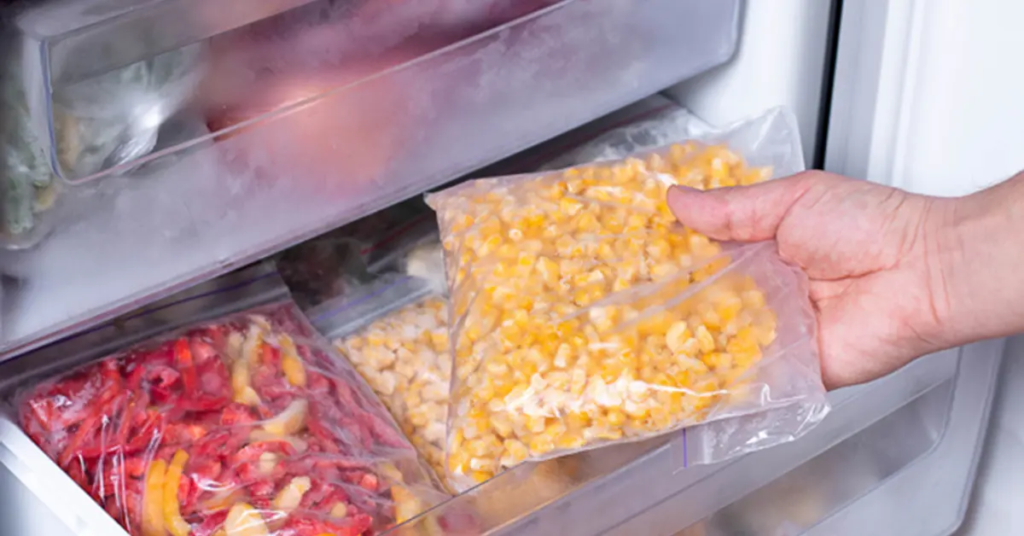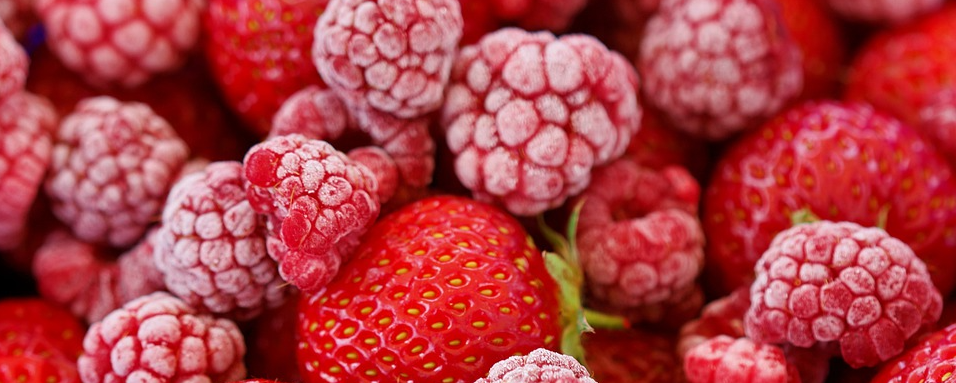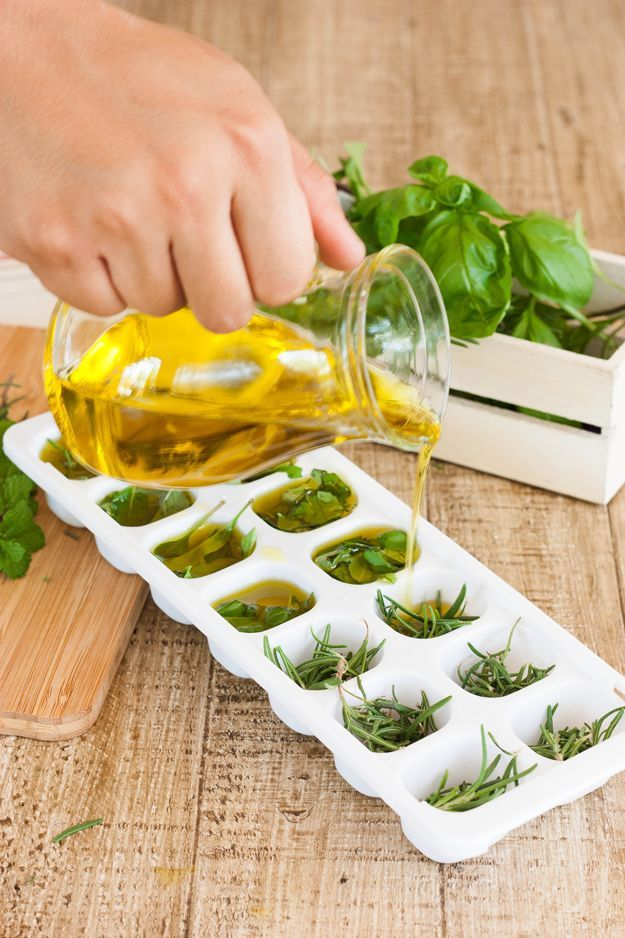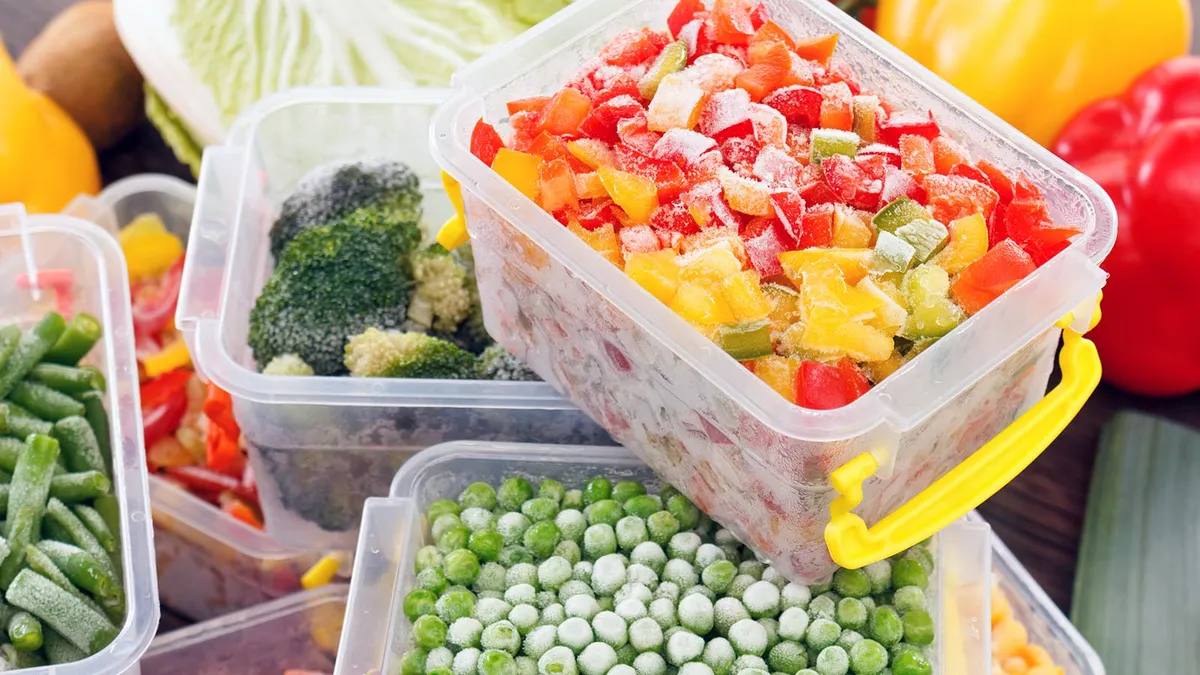If your garden is overflowing with fresh produce, freezing is a simple and efficient way to preserve its peak flavor and nutritional value for later use. However, freezer space can be limited, so knowing the best techniques for preparing, storing, and saving space will help you make the most of your bounty.
1. Preparing Vegetables for Freezing
Most vegetables can be frozen, but it’s essential to follow a few steps to ensure quality. Avoid freezing delicate produce like salads or vegetables with high water content, such as cucumbers. Only freeze vegetables that are fresh and in good condition.
- Harvest Close to Freezing: Pick your produce just before freezing to lock in peak freshness.
- Batch Processing: Work in small batches to speed up the freezing process.
For vegetables like sweet corn, beans, peas, and carrots, it’s helpful to break them down before freezing:
- Corn: Remove kernels from the cob to save space. Use a knife to pop out the first row of kernels, then push the rest out with your fingers for minimal waste.
- Beans & Peas: Trim and chop beans before freezing, and for larger beans, cut them in half.
Blanching is essential for maintaining quality. Bring a pot of lightly salted water to a rolling boil and blanch small vegetables (like peas) for about one minute, beans for two, and larger slices like carrots for three to four minutes. After blanching, cool the vegetables quickly in ice water, pat them dry, and pack them for freezing.
2. Freezing in Portions
When freezing produce, portion it into meal-sized quantities to avoid thawing more than you need. Label freezer bags with the contents and date for easy identification. For vegetables that require preserving their shape, freeze them on trays for an hour before packing into bags.
To prevent freezer burn (when food loses moisture and flavor), remove as much air as possible from your freezer bags. A useful technique is using a straw: insert it into the bag, seal around it, suck out the air, then quickly remove the straw and seal the bag.

3. Freezing Fruits
Unlike vegetables, many fruits—especially berries and currants—can be frozen whole without blanching. Spread them out on a tray to freeze separately before packing them into portion-sized bags. For fruits used in smoothies or purees, you can skip the tray step and pack them directly.
For fruits used in cooked desserts, coat them with sugar before freezing to help preserve their firmness. Alternatively, cook the fruit into a puree with a little sugar and freeze it for future use.

Tomatoes, which become mushy when thawed, should be processed into sauces before freezing. This method saves freezer space as well.
4. Maximizing Freezer Space
To save valuable freezer space, freeze sauces and purees in rigid containers first. Once frozen, remove the solid block from the container and transfer it to a freezer bag. You can also place the sauce-filled bags in a box for easier stacking.
Old containers, such as Tupperware or take-out boxes, can be repurposed for freezing. Just be sure to leave a bit of space at the top for expansion during freezing.
5. Freezing Fresh Herbs
Fresh herbs are easy to preserve by freezing. After washing and finely chopping the herbs, place them into ice cube trays. Fill the trays with water to cover the herbs, then freeze. Once solid, pop the herb cubes out of the tray and store them in labeled freezer bags. This method lets you quickly access herbs for cooking at any time.

Freezing is one of the easiest and most effective ways to preserve your garden’s produce. By following these steps, you’ll ensure your vegetables and fruits maintain their flavor, nutrients, and texture until you’re ready to enjoy them later in the year.
